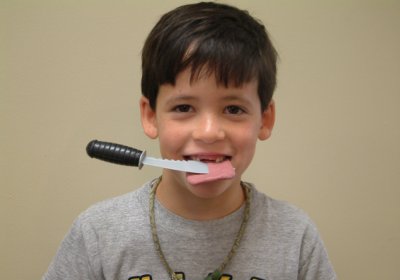FAQs - General Orthodontic Questions
How Teeth Move
Teeth respond to the gentle forces that are applied to them. “Braces” are a combination of “brackets” and “wires”. Brackets are the part of the braces that attach to the teeth. Brackets are the “handles” that help control movement of the teeth. Braces require a wire called an “archwire” that connects the brackets and provides the forces to steer the teeth in the proper direction. It’s actually the wires that move teeth. The interaction of brackets and archwires enables the orthodontist to have three-dimensional control over the movement of the teeth. In many cases, additional forces are needed to help balance the underlying jaw structure and to help the upper and lower teeth fit properly together to make the bite right. Examples of these extra forces include: elastics (rubber bands) hooked to teeth (see photo below); functional appliances; and palatal expanders (see photo below). |
 |
|
| Rubber bands provide additional forces to move teeth | A palatal expander |
Back to Top
Back to "FAQs - Main Page"
Types Of Braces
Are there different types of braces?
Braces differ from one another in many ways. How they attach to the teeth varies. Most attach on the cheek side of the teeth, while some attach on the tongue side. These are called “lingual” braces.
Braces vary in appearance. Some braces are clear, nearly invisible, while others are made of stainless steel and may or may not have colored elastics around them. All braces are designed to enable the orthodontist to move teeth in three dimensions. The mechanics or techniques used for moving teeth vary as well. |
 |
|
| Metal Braces | Ceramic Braces |
Back to Top
Back to "FAQs - Main Page"





























